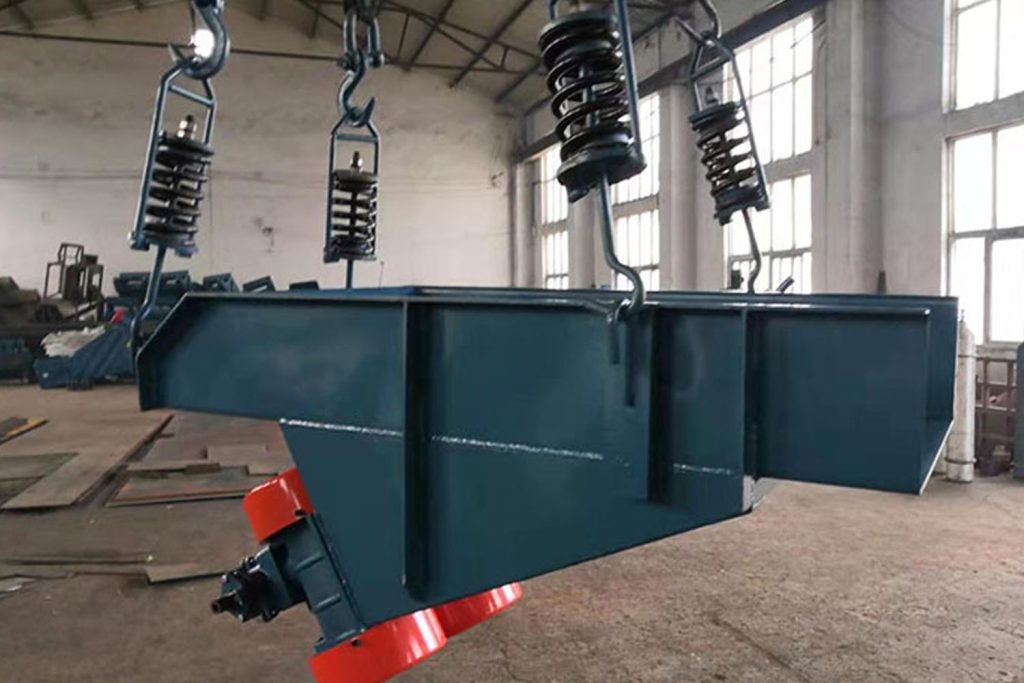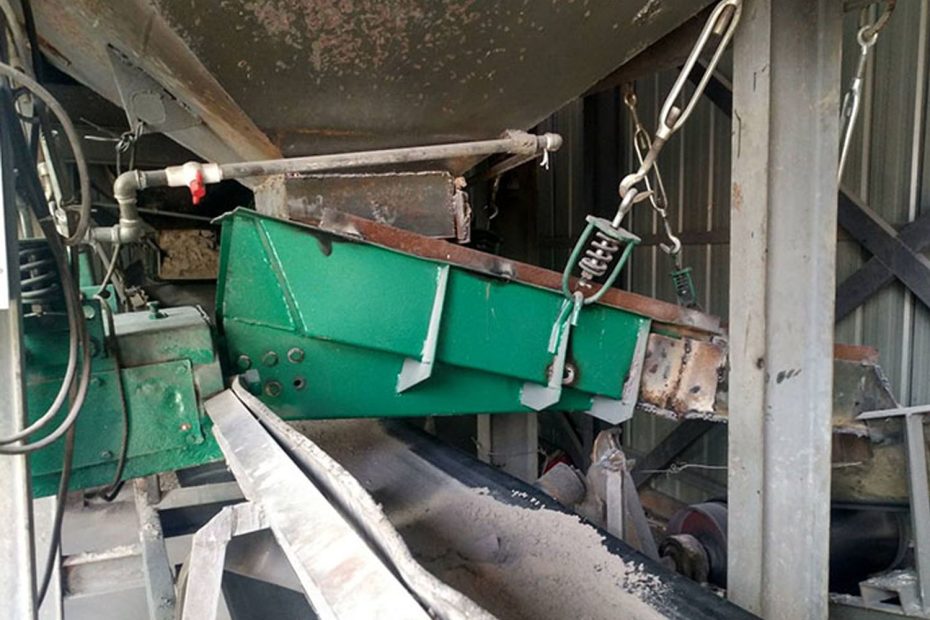A vibrating feeder, also known as a vibration feeder, is a device that can feed block or granular materials from a storage bin to a receiving device evenly, regularly, and continuously.
Electromagnetic vibrating feeders are used to feed materials from a storage bin or other storage equipment to a receiving device evenly or quantitatively. They are essential equipment for implementing automated assembly line operations and are divided into open and closed types.
Electromagnetic vibrating feeders are a relatively complete elastic system of dual-mass directional forced vibration. The entire system operates in a low critical resonance state. It mainly uses an electromagnetic exciter to drive the trough to reciprocate at a certain inclination angle to move the material along the trough.
Five major features of electromagnetic vibrating feeders
- Small size, light weight, simple structure, easy installation, no rotating parts, no lubrication required, easy maintenance, and low operating costs.
- Since the electromagnetic vibrating feeder uses the resonance principle of mechanical vibration, the dual-mass works in a low critical near-resonance state, so it consumes less electricity.
- Since the material flow can be changed and opened and closed instantly, the feeding amount has a high accuracy.
- The control equipment of this series of electric vibrating machines adopts a thyristor half-wave rectifier circuit. Therefore, the feeding amount can be conveniently and steplessly adjusted by adjusting the thyristor opening angle during use, and the centralized control and automatic control of the production process can be realized.
- Since the material in the feed trough is continuously thrown up during the feeding process and jumps forward along a parabolic trajectory, the wear of the feed trough is relatively small.

Precautions for the installation of electromagnetic vibrating feeders
- Electromagnetic vibrating feeders are generally installed in a suspended manner. The suspension rod should be installed on a structure with sufficient rigidity. In order to reduce the lateral swing of the electromagnetic vibrating feeder, the suspension rod should be opened outward by about 10°.
- The electromagnetic vibrating feeder should be installed as a whole. Generally, disassembly is not allowed, and no rigid accessories are allowed to be fixed on the machine. During installation, a certain amount of space should be left around the equipment to avoid collision with other equipment during operation. Generally, the minimum space in the length direction is 50mm and the width direction is 25mm.
- The trough of the electromagnetic vibrating feeder can be installed horizontally or tilted. Its feeding capacity is proportional to the tilt angle. However, if the tilt angle is too large, it is easy to cause material self-flow, making it difficult to ensure feeding accuracy. Therefore, it should be determined whether to tilt upward, tilt downward, or place horizontally according to the nature of the material.
- After installation, the feeder should be horizontal to prevent the material from shifting to one side when the feeder is working, and ensure that all fastening bolts are firmly tightened.
Conclusion
The electromagnetic vibrating feeder has a simple structure, stable operation, low power loss, and convenient operation. It can evenly adjust the feed rate. The equipment is widely used in mining, metallurgy, coal, electricity, chemical industry, food, glass, refractory materials and other industries.
